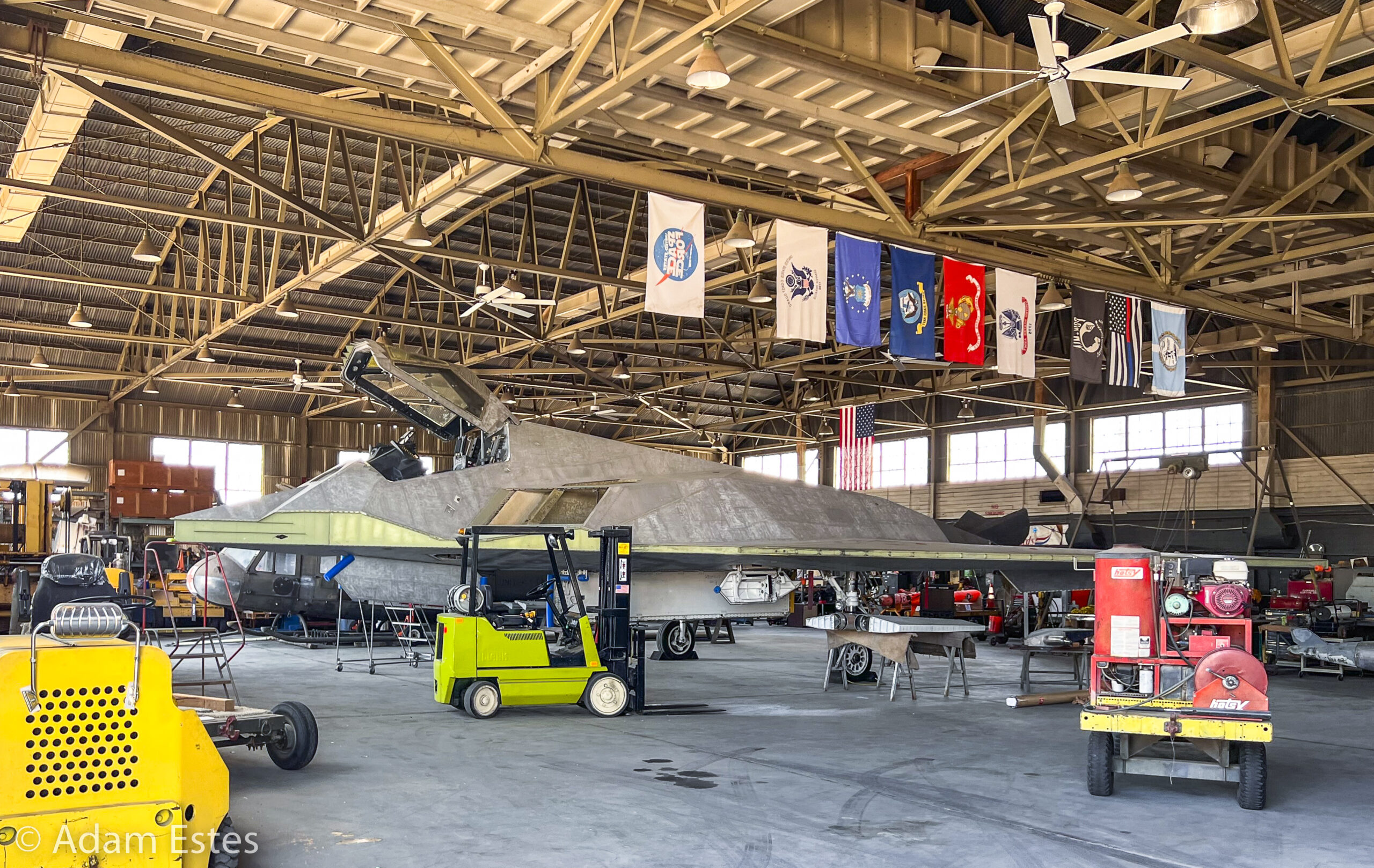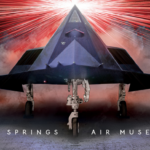by Adam Estes
In February, 2021, we published an article about the U.S. Air Force transferring a retired Lockheed Nighthawk to Castle Air Museum for public display at their facility in Atwater, California. The airframe in question, F-117A 85-0813 Toxic Avenger, was in long-term storage alongside a number of other retired ‘Stealth Fighters’ at the time, hidden away at the Air Force’s secretive Tonopah Test Range in the high deserts of Nevada. It took some time to complete the necessary de-mil procedures to remove any sensitive components from Toxic Avenger, particularly the aircraft’s top secret, radar-absorbent exterior panels, but by July, 2022 the partially-stripped airframe was aboard a transport vehicle headed for Castle Air Museum’s restoration facility.
Since its arrival, the aircraft has received attention from museum personnel, preparing it for permanent display. The restoration team has had a lot of work to do, given the nature of the de-mil process; even so, its cockpit is remarkably intact. The team reinstalled the Nighthawk’s wings last May, and work is currently underway to reattach the wing leading edges, tail controls, and ailerons. As per the museum’s agreement with the U.S. Air Force, once Toxic Avenger is restored and ready for display, it will be housed in a temporary hangar all on its own while the museum works to build a new Aviation Pavilion to house around twenty aircraft from its collection, including many of the WWII-era aircraft currently on outdoor display.
Toxic Avenger has an interesting history. This F-117 first took flight on June 7th, 1985, with Lockheed test pilot Harold “Hal” Farley at the controls. Soon afterwards, the Air Force assigned 85-0813 to the Ghostriders at the 416th Tactical Fighter Squadron, 37th Tactical Fighter Wing. Many F-117s received nicknames, with 85-0813 gaining its moniker from the titular character in the 1984 dark comedy The Toxic Avenger. In mid-December, 1989, Toxic Avenger was one of several 37th TFW F-117s which took part in Operation Just Cause, the U.S. invasion of Panama to overthrow the dictator, Manuel Noriega. This was the type’s first experience of combat. Two F-117s dropped 2,000lb Mk.84 bombs onto the military barracks at Rio Hato airfield, with U.S. Army Rangers soon moving in to seize the base from Panamanian forces. Two years later, Toxic Avenger took part in Operation Desert Storm, helping free the nation of Kuwait following the Iraqi invasion. The aircraft flew 35 combat missions during this conflict, serving as the personal mount of Colonel Alton “Al” Whitley who commanded the 37th TFW at that time. Toxic Avenger remained in service until January 25, 2008, when the Air Force placed the airframe in indoor storage at Tonopah. The entire fleet of F-117s was scheduled to retire at the same time, publicly at least, although we now know that a handful of them have continued to fly in secret, serving, presumably, as test platforms and stealth targets.
The author would like to express his thanks to the staff at Castle Air Museum for their assistance in writing this article.







































